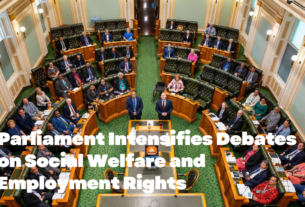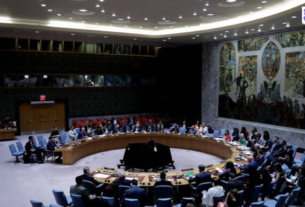President Donald Trump unveiled what he’s calling a “big, beautiful” budget blueprint this week, a sweeping 40-page proposal that slashes domestic discretionary spending by $163 billion while bolstering defense, immigration enforcement, and national security. The budget is already sparking intense debate on Capitol Hill.
A centerpiece of the plan is a record-breaking investment in military and defense, with funding surpassing $1 trillion for the first time. The proposal allocates billions for advanced systems like the F-47 Next Generation Aircraft, the “Golden Dome” missile defense shield, and the expansion of the U.S. nuclear deterrent. The White House insists this is necessary to “restore American dominance on the world stage.”
Meanwhile, Homeland Security would receive an unprecedented $175 billion, largely aimed at strengthening the southern border, increasing deportations, and expanding detention centers. Administration officials say this addresses what they call a “national emergency” of illegal migration and border crime.
On the domestic front, Trump’s budget proposes deep cuts to climate initiatives, higher education subsidies, and public health programs. The National Institutes of Health (NIH) would face an $18 billion cut, sparking concern among public health advocates and researchers. Funding to the Department of Education, EPA, and arts and humanities is also on the chopping block.
However, the administration insists that the plan protects core entitlements: Social Security, Medicare, and Medicaid will not face direct cuts. Instead, the budget proposes tighter oversight and anti-fraud initiatives for Medicaid, aimed at saving billions in misuse.
House Speaker Mike Johnson lauded the plan as a reflection of “true conservative values,” saying it restores fiscal discipline while focusing on national strength and American families. “We’re cutting the fat and reinvesting in our core freedoms,” Johnson said at a press briefing.
Critics, however, see the budget as a dangerous rollback of public protections. Senate Majority Leader Chuck Schumer called it a “war on the poor, the sick, and the environment.” Progressive Democrats argue that gutting health and education spending while inflating defense budgets reveals a skewed set of priorities.
Economic analysts are split. Some conservative economists argue the budget’s “growth-first” philosophy will stabilize inflation and reduce the $34 trillion national debt. Others warn that cutting domestic investments in health, education, and infrastructure could harm long-term economic growth.
Outside Washington, the budget has energized Trump’s base. Conservative media outlets hailed it as a return to “America First” economics, while business leaders praised reductions in regulation and foreign aid. But civil society organizations warn that the long-term effects could be devastating to vulnerable communities.As Congress prepares to dissect the proposal line by line, one thing is clear: Trump’s budget plan is not just a fiscal document, it’s a political statement. It draws a sharp line between two visions for America’s future, and both parties are already gearing up for a budget battle that may define the 2025 legislative year.




